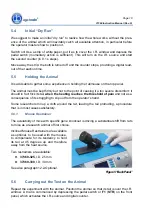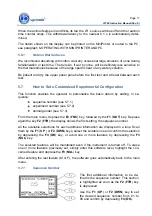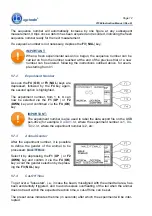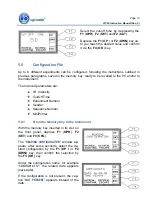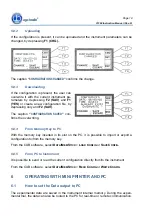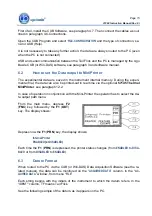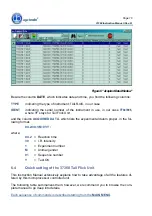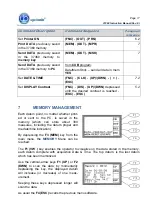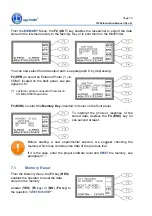
Page 24
37360 Instruction Manual (Rev. 0)
At this point, set again date and time, see paragraph 7.2 and configuration, see para-
graph 5.7.
If a Radiometer 37300 is available, recalibrate, see paragraph 9.2.
10.2
Replacing the Bulb
You will realize, in the course of an experiment that the bulb is burnt-out (glow lamps
have unfortunately a finite life span) because the missing I.R. source causes the counter
to stop automatically after the preset cut-off time, see paragraph 5.7.4.
But even before that, you will have noticed the absence of any animal reaction! The bulb
is located into the I.R. Source, see paragraph 2.1.
To replace the bulb and, in general, to service the I.R. Source, it is necessary to remove
the top and bottom panels.
To take the bulb out
, first loose the two miniature contact screws which fasten the sock-
et to the bulb current-carrying studs. Swing the socket apart.
Free the bulb by removing its holding collar. You will notice the small protrusion on the
glass rim of the bulb reflector.
Position the fresh bulb
into its pentagonal receptor and rotate it until the mentioned pro-
trusion mates the rectangular cut of the supporting winglet.
Try to turn the bulb, both CW & CCW. If it doesn’t, it means the fit is O.K. Reposition the
collar.
Then fit the socket to the studs of the fresh bulb and retighten the contact screws. There
is no polarity to worry about. Avoid leaving “finger prints” on the concave reflector, while
you are handling the bulb.
Needless to add, recalibrate (see paragraph 9-CALIBRATION).
10.3
Cleaning the Optics Thoroughly
Fan cooling, using room air, and protecting the I.R. optics from dust are both laudable but
– alas – conflicting requirements.
After 2-3 years and during major instrument overhauls, a thorough cleaning of the optics
is advisable: it can be done at the factory only, where appropriate tools and facilities are
available for dismantling, cleaning (ultrasonic bath), reassembling, realigning, etc.
Please contact our Customer Support, see paragraph 10.5.
10.4 Long
Inactivity
The instrument does not require any particular maintenance after long inactivity, except
cleaning.

